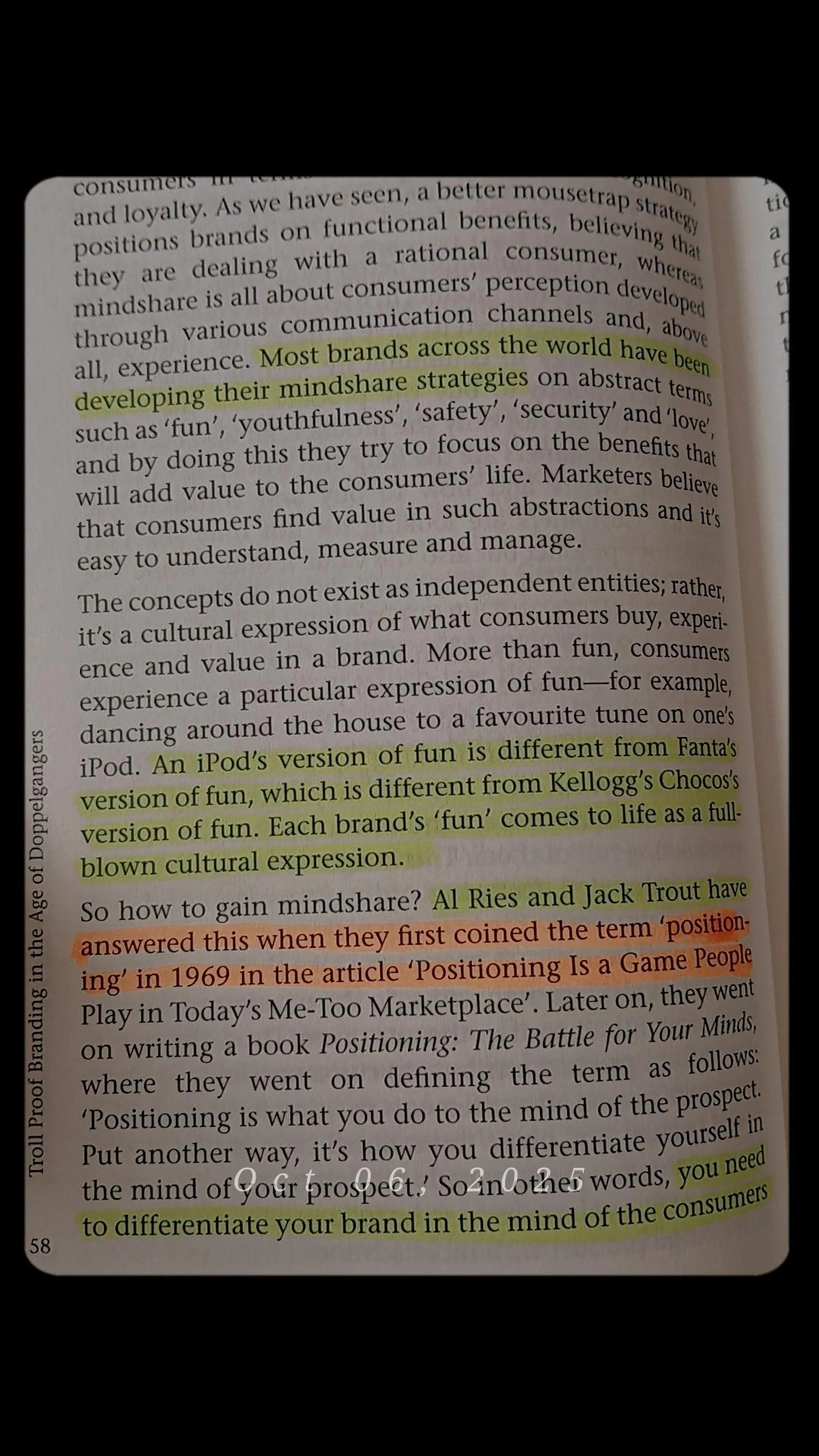Back
Anonymous
Hey I am on Medial • 1y
14. Changing Positioning: Once a product has been positioned in the market, changing that positioning is difficult. It’s easier to find a new position in consumers’ minds than to shift an existing one. 15. Using Credibility to Strengthen Position: For your positioning to be successful, it needs to be credible. Use testimonials, reviews, or well-known partners to build trust and reinforce your positioning. 16. Importance of Consistency: Consistency in communication is crucial. Reinforce the same position in all your marketing messages over time, as frequent changes can confuse your audience. 17. The Trap of Imitation: Don’t imitate your competitors. Differentiation is key to standing out. Copying others’ positioning can lead to confusion and brand failure. 18. Global Positioning Challenges: Positioning varies across markets, and what works in one country may not work in another. Businesses must adapt their strategies to local market perceptions. 19. Perception of Leadership: Being perceived as the leader or expert in your category helps solidify your position in the market. Once a brand is established as a leader, it often enjoys lasting success. 20. Positioning for Individuals: The principles of positioning can apply not only to products but also to individuals. Building a personal brand and establishing a strong position in the minds of employers or peers is key for career success. 21. The Importance of Category: Positioning should focus not only on the product but also on the category. Brands need to establish a clear category to position themselves effectively. If the category is well-defined, it makes positioning easier. 22. Mind Share vs. Market Share: The authors differentiate between mind share (the perception and awareness of a brand in consumers' minds) and market share (actual sales). Mind share can often lead to market share if effectively managed. 23. Creating a New Category: Sometimes, the best way to position a product is to create a new category entirely. This allows a brand to be perceived as the leader in that new category, avoiding competition with established brands. 24. Positioning Through Contrast: To enhance positioning, brands can use contrast to highlight differences between themselves and competitors. This can be done by clearly articulating what the brand stands for and what it does differently. 25. Consistency in Positioning: Maintaining a consistent position over time is crucial for building a strong brand. Frequent changes in positioning can confuse consumers and weaken brand loyalty. 26. The Role of Advertising: Advertising should reinforce positioning, not redefine it. Marketing campaigns must be aligned with the brand's established position in consumers’ minds. 27. Simplicity is Key: A simple message is easier for consumers to understand and remember. Complexity can dilute the effectiveness of the positioning strategy.
More like this
Recommendations from Medial
Only Buziness
Everything about Mar... • 10m
Positioning Positioning defines how a brand is perceived in the minds of customers. Key strategies: 1. Product-Based Positioning: Highlighting the unique features or qualities of the product. 2. Price-Based Positioning: Emphasizing affordability o
See More
Pulakit Bararia
Founder Snippetz Lab... • 10m
In today’s competitive world, brand positioning isn’t optional—it’s essential. here’s a breakdown of the five core brand positioning strategies that drive success: Attribute-Based Positioning Focus on a key feature of your product or service. Think
See More



Deepika Rallapalli
Business Analyst & D... • 6m
Have you ever calculated the Minshare of your brand? Mind share refers to the degree of awareness, recall, and preference your brand holds in the minds of your target audience. #rxmarketing #pharmaIndustry #HCPEngagement #Pharmamarketing #pharmace
See More
Sairaj Kadam
Student & Financial ... • 11m
Transforming Your Brand Into a Symbol Through Positioning To make your brand a symbol of trust, value, or excellence, positioning is key. This involves defining your market, differentiating yourself, and articulating your unique place through a Posi
See Moresujeeth challa
Hey I am on Medial • 7m
4700 BC I have always fancied this brand and liked their positioning. They are category creators and market leaders in the gourmet popcorn segment . A few companies also came by but none seem to have matched it. What do you think are their strengths
See MoreHarsh Gupta
Digital Marketer (Me... • 1y
It will not easy ! Assume you have an apparal brand and you want to position your brand in this cluttered market what will be your marketing tactics to palace your brand as sub premium category . Neice : Gym Enthusiasts Price Range: 500-900 Target
See MoreShubhankar Das
Branding | Founder a... • 2m
Catch "mindshare" rather than "Marketshare" Branding involves a important term called mindshare where all the brand focus on put a position of there brand in there customers mind of what they should think about that brand it can be fun , ambiti
See More
Shashwat Jain
Early Entrepreneur • 8m
We’re building something different. If you’re tired of the usual, and want to be part of a bold team that’s creating a new category—this is your shot. We’re not hiring employees, we’re building with believers. Looking for smart, creative minds in
See MoreDownload the medial app to read full posts, comements and news.
































